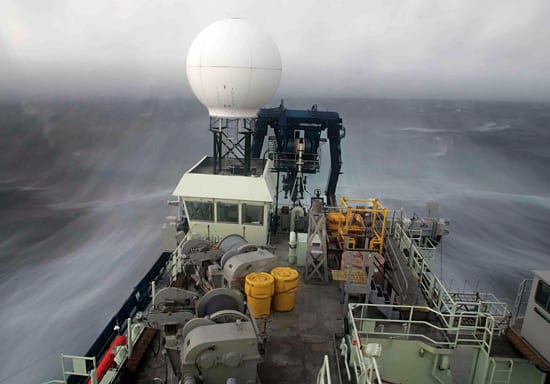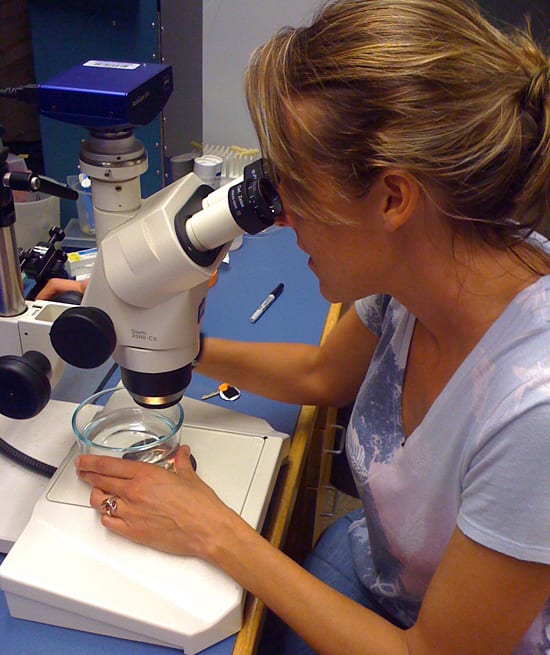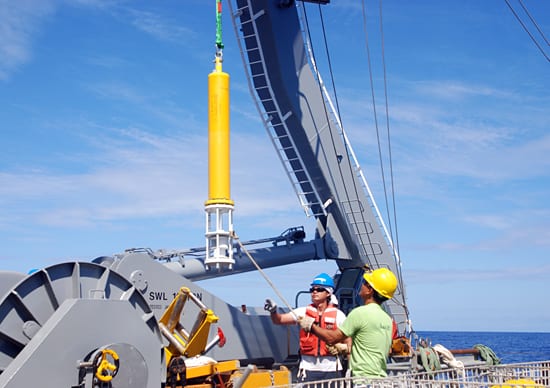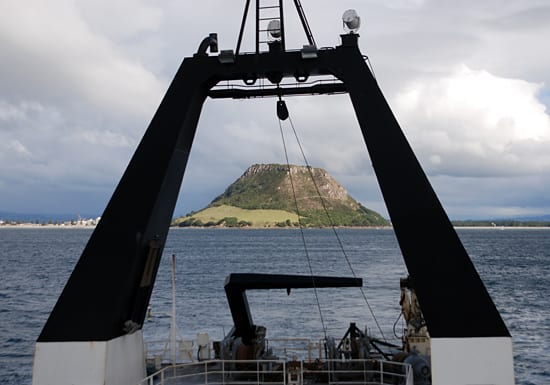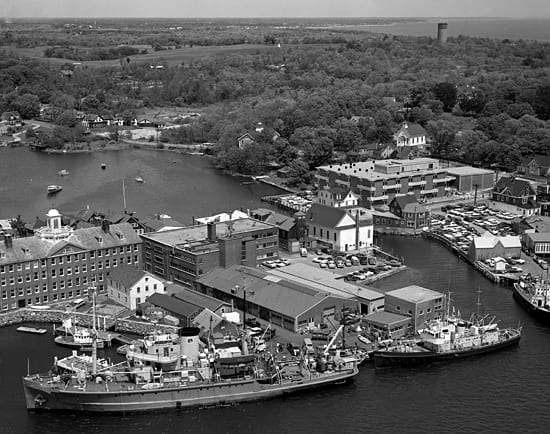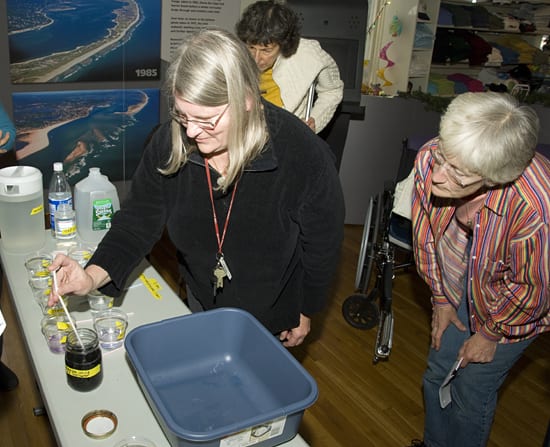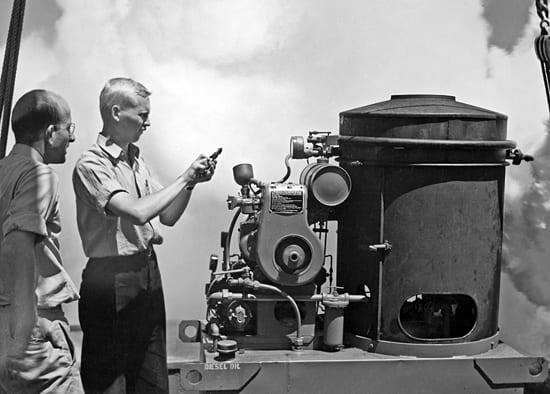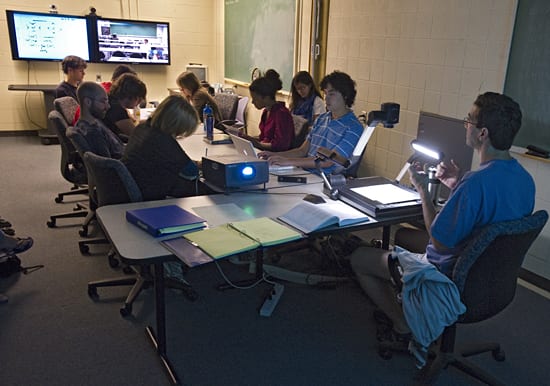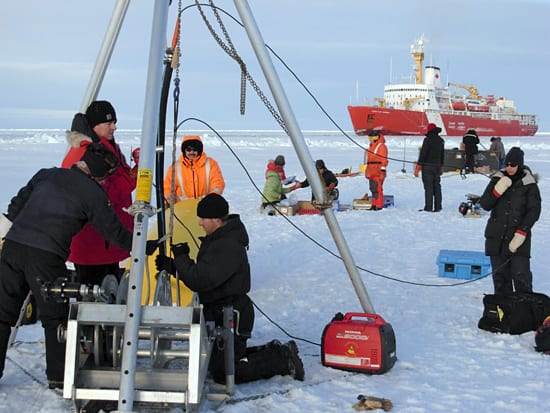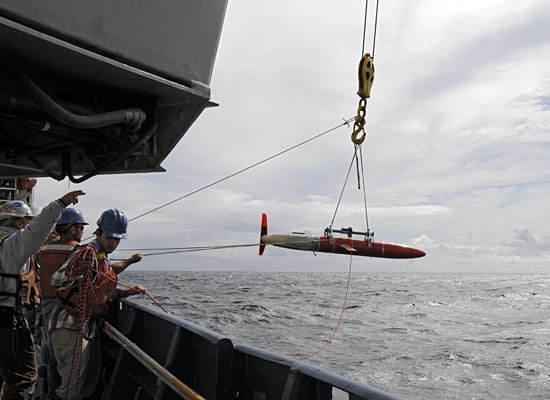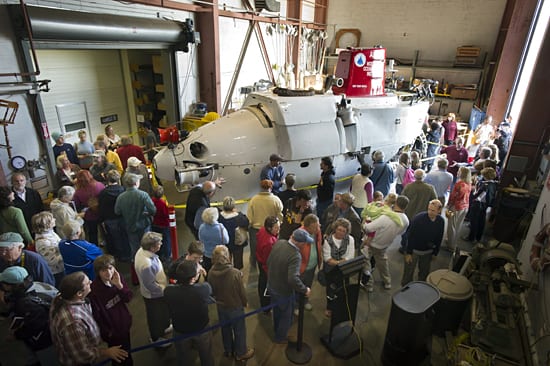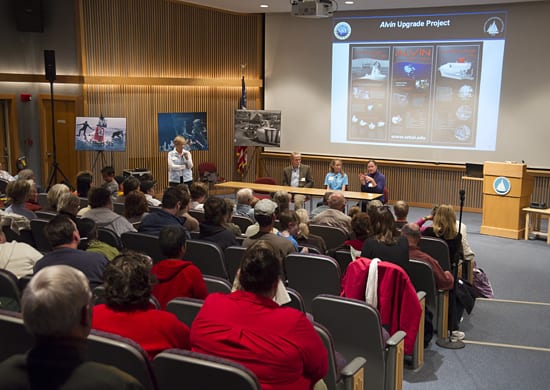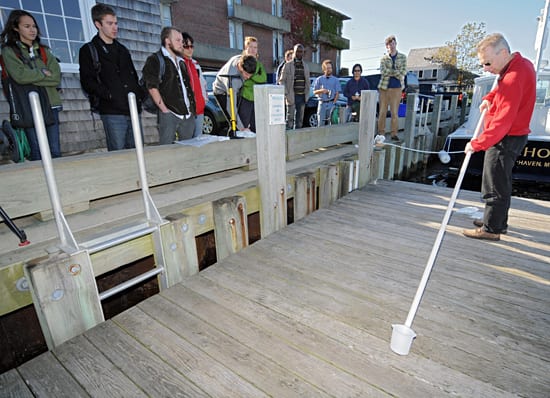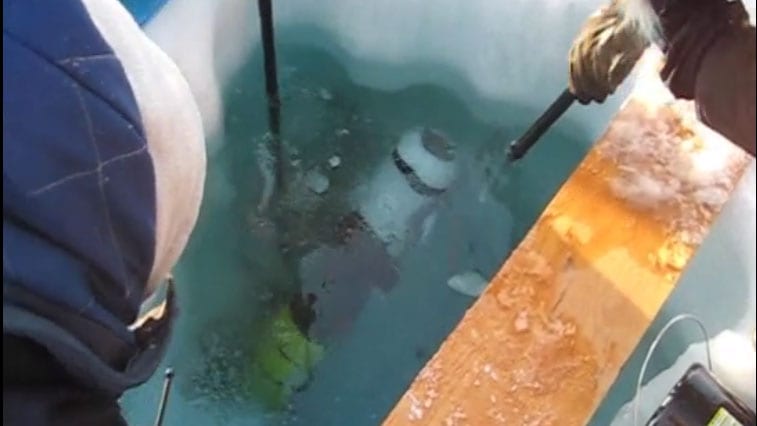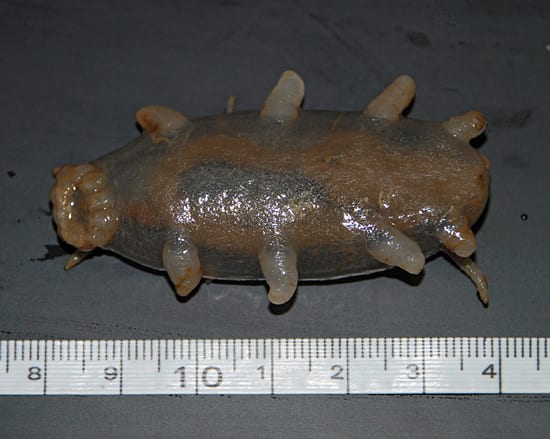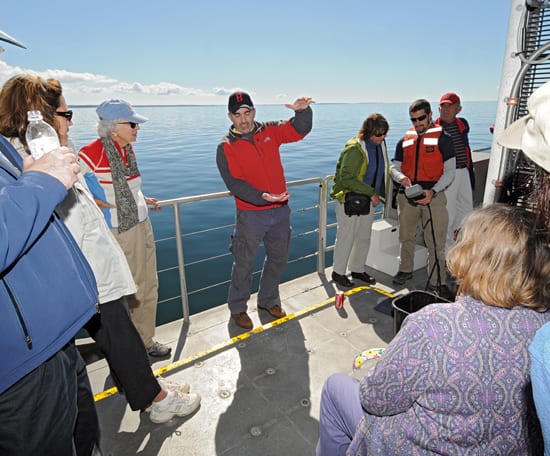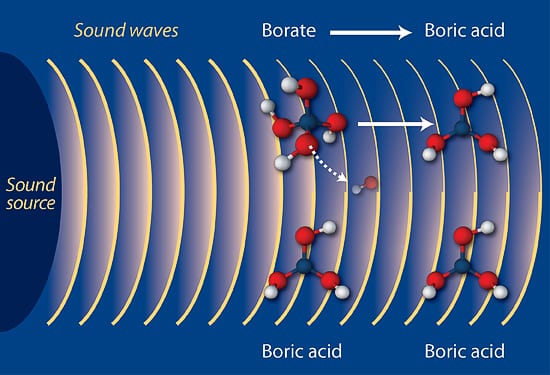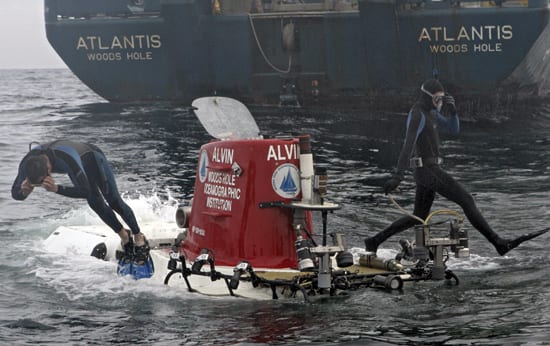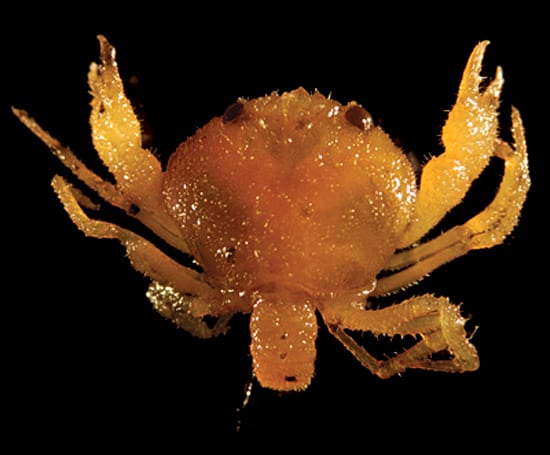Multimedia Items
Quite a Ride
Oceanographers working in the North Atlantic in autumn always face the prospect stormy weather, but those on a recent cruise on the research vessel Atlantis got more than their share.…
Read MoreCultured Starlet
WHOI biologist Ann Tarrant looks through her microscope at cultured larvae of the starlet sea anemone, Nematostella vectensis, which lives in salt marshes in the Gulf of Mexico and along…
Read MoreChile Quake Damage
WHOI geophysicist Jian Lin points to a 12-story building in Concepcion, Chile, that was upended and toppled by the magnitude 8.8 earthquake on February 27, 2010. Luckily, the building was…
Read MoreCurrent Event
WHOI Engineer Assistant Dan Bogorff (left) and a crew member from the R/V Atlantic Explorer add a current meter to one of six moorings that were deployed down the southeast…
Read MoreA Picture-Perfect Volcano
The A-frame of the R/V Tangaroa frames Mount Maunganui, the dormant volcano that welcomes mariners to the port of Tauranga, New Zealand. Tauranga was the departure point for Associate Scientist…
Read MoreAn Ocean-Going Tradition, Then and Now
In this 1965 aerial view of Woods Hole, WHOI’s three large laboratories, left to right, are visible: the Bigelow, Smith, and Redfield buildings. The research vessels Chain and Bear are…
Read MoreTeaching the Teachers
Twice per year, WHOI hosts teacher workshops designed to give educators first-hand knowledge about exciting and current ocean science and engineering topics. Here teachers get some experience with a classroom…
Read MoreHow Do Baby Corals Grow?
Summer intern Hannah Barkley holds a ceramic tile on which several star-shaped skeletons of newly-settled coral have developed (circled). A senior at Princeton, Barkley spent the summer working with WHOI…
Read MoreHappy Veterans Day
Al Woodcock (left) and an unidentified colleague test a smoke generator in 1943. The device was used to study the effectiveness of smoke screens to protect troops during beach landings…
Read MoreBottled Water With a Bite
Water samples taken from deep in the North Atlantic wait outside WHOI’s Fye Laboratory for processing. They will be analyzed for trace elements such as neodymium and thorium, which provide…
Read MoreJoint Program Students Go With the Flow
In an MIT/WHOI Joint Program class in Marine Chemistry, WHOI Senior Scientist Scott Doney discusses the chemical composition of seawater and how it varies geographically and with time. The course…
Read MoreCast Adrift
WHOI engineers Jim Dunn (left in red jacket) and Kris Newhall (kneeling) prepare to deploy an ice-tethered profiler (ITP) during a cruise on the CCCG Louis S. St. Laurent in…
Read MoreA Flying Fish of Sorts
Spray gliders, like this one deployed from the R/V Atlantis in September, are robotic submarines that “fly” underwater without a human controller. In September Chief Scientist Dr. Tim Eglinton and others undertook…
Read MoreA Sub Out of Water
Alvin, the deep-diving, three-person research submarine, is generally on the job, which means it’s at sea. But every few years, it returns to Woods Hole Oceanographic Institution for routine maintenance…
Read MoreMeet the Sub
WHOI scientist Susan Humphris (far right, seated) answers a question from a member of the audience about the Alvin submersible upgrade project during a public event held on Oct. 17,…
Read MoreLittle Dipper
WHOI scientist Bernhard Peucker-Ehrenbrink demonstrates how to sample river water for participants in the Woods Hole Global Rivers project. The project addresses the flow of water, sediments, and nutrients into…
Read MoreThe Icebot short version
This short video documents an expedition to use robots under Arctic ice.
Read MoreHere Piggy
On a 2009 expedition, WHOI biologist Tim Shank and WHOI’s hybrid robotic vehicle Nereus collected this animal 8.984 meters (5.58 miles) down in the Mariana Trench. A sea cucumber in…
Read MoreThe Wide View
William Stelling Von Arx (1916-1999), shown here working with a wide-angle cloud camera and lens, first came to WHOI in 1945. He is known for his work in physical oceanography…
Read MoreThe One that Got Away
Senior Scientist Christopher Reddy (center), director of the Costal Ocean Institute (COI), describes to guests aboard the R/V Tioga how dissolved oxygen levels are measured. In an effort to expand WHOI’s presence…
Read MoreFuture Oceanographers
Young visitors check out one of the most popular exhibits at the WHOI Ocean Science Exhibit Center, a full scale mock-up of the personnel sphere of Alvin. Visitors to the…
Read MoreSound and Chemistry
Will ocean acidification interfere with the ability of whales and other animals to communicate, navigate, and find food? WHOI acoustic scientists Tim Duda and Ilya Udovydchenkov undertook a study in…
Read MoreAnother Day, Another Dive
On a foggy August morning swimmers, Ronnie Whims and Donny Collasius, dive into the water to remove the human occupied vehicle (HOV) Alvin‘s basket safety lines. Once all the pre-launch…
Read MoreA Little Crabby
Scientists collected this 8mm crab larva at a deep-sea hydrothermal vent site where an eruption of lava had recently covered the site. Adults of this species (Bythograea thermydron) were common…
Read More
